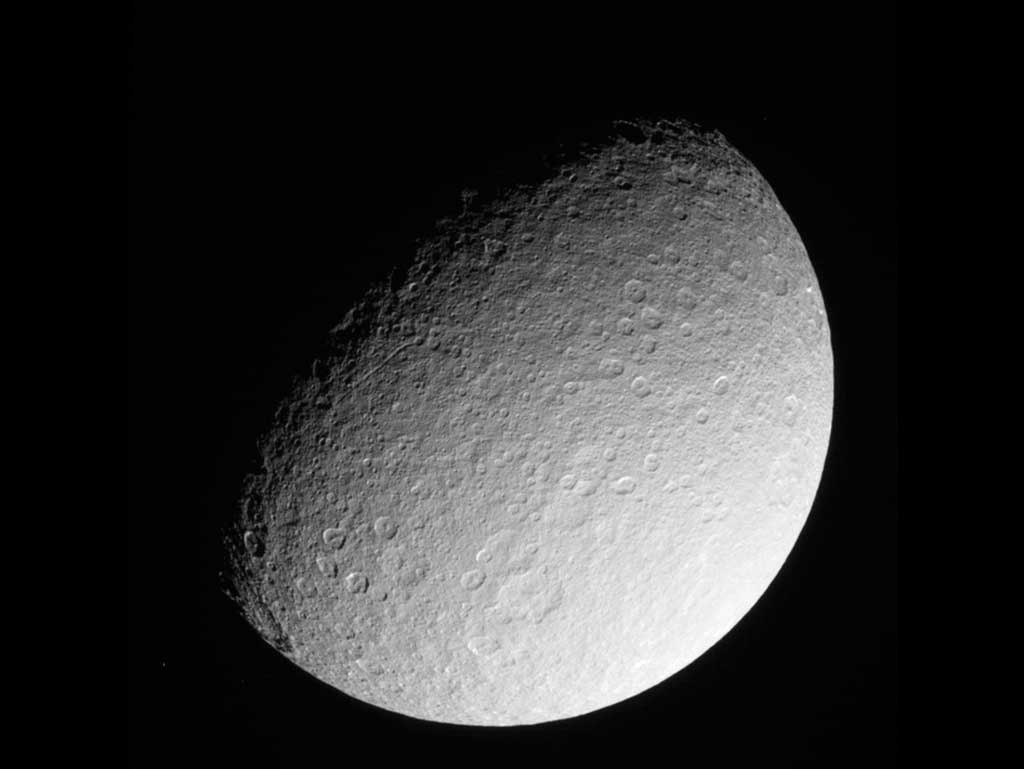Cassini flew by Rhea at an altitude of 620 miles (997 kilometers) March 9, 2013. This flyby was designed primarily for the radio science sub-system to measure Rhea’s gravity field. During closest approach and while the radio science sub-system was measuring the icy satellite’s gravity field, the imaging team rode along and captured 12 images of Rhea’s rough and icy surface. Outbound from Rhea, Cassini’s cameras captured a set of global images from a distance of about 167,000 miles (269,000km).
Data from Cassini’s cosmic dust analyzer were also collected to try to detect any dusty debris flying off the surface from tiny meteoroid bombardments. These data will help scientists understand the rate at which “foreign” objects are raining into the Saturn system.
This was the mission’s fourth close encounter with Rhea. The spacecraft will pass the moon again, but at a much greater distance, in a few years.










